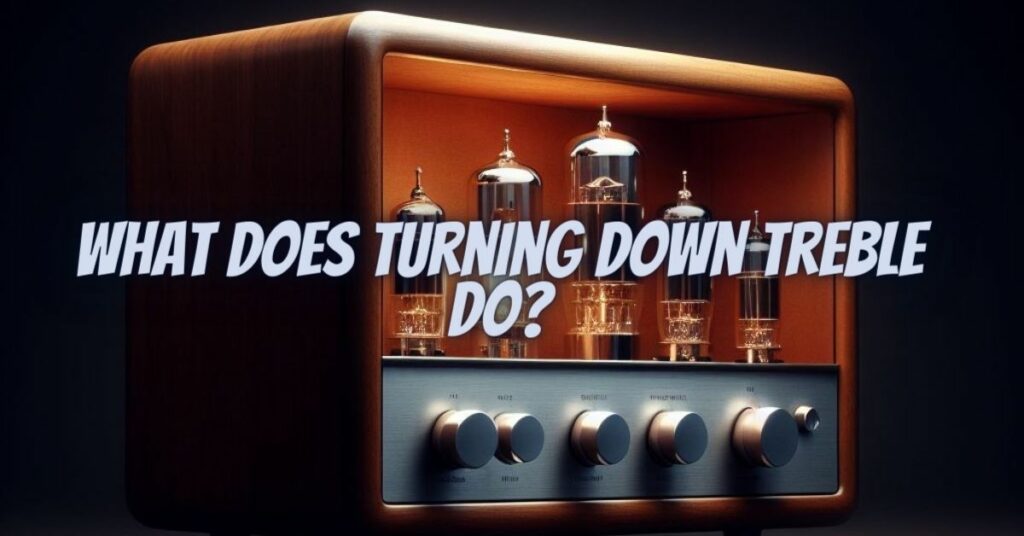Turning down treble reduces the amplitude of high-frequency audio signals. This can make music sound mellower and less harsh, but it can also make it sound less detailed and less lively. Turning down treble can be useful in a variety of situations, such as when listening to music in a noisy environment, listening to music with a lot of bass, or listening to music on headphones.
Here are some additional effects of turning down treble:
- Reduces the brightness of the sound. High-frequency sounds are perceived as brighter than low-frequency sounds, so turning down treble can make music sound less bright. This can be helpful if you find that certain songs or albums are too bright for your taste.
- Reduces the sibilance in vocals. Sibilance is the harsh sound that can be produced when consonants such as “s” and “f” are pronounced. Turning down treble can help to reduce sibilance, making vocals sound smoother and more pleasant to listen to.
- Reduces the harshness of certain instruments. Some instruments, such as electric guitars and cymbals, can sound harsh when played at high volumes. Turning down treble can help to reduce the harshness of these instruments, making the overall sound more balanced and less fatiguing.
It is important to note that there is no one-size-fits-all answer to the question of how much treble to turn down. The best setting will vary depending on the type of music you are listening to, the room acoustics, and your personal preferences. However, a good rule of thumb is to start by turning down the treble slightly and then adjusting it to taste.
Here are some additional tips for turning down treble:
- If you are unsure how much treble to turn down, start by turning it down by 10-20%. You can always turn it down more if you need to.
- Experiment with different treble settings until you find a balance that sounds good to you. There is no right or wrong answer.
- Keep in mind that the type of music you are listening to can affect how much treble you need. For example, classical music and jazz typically benefit from more treble than rock music or electronic music.
- The room acoustics can also affect how much treble you need. If you are listening to music in a small room, for example, you may want to turn down the treble slightly to avoid a harsh sound.
Ultimately, the best way to determine how much treble to turn down is to listen to your music and adjust the treble until you are happy with the sound.


